|
Installations
|
|
|
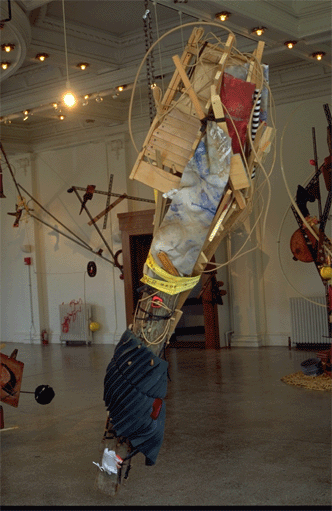
Red Diamond
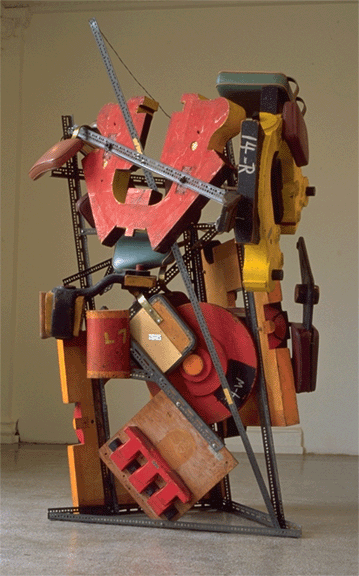
Crossing the Muse.
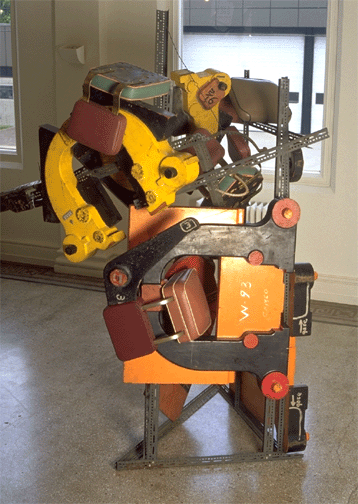
Crossing the Muse.
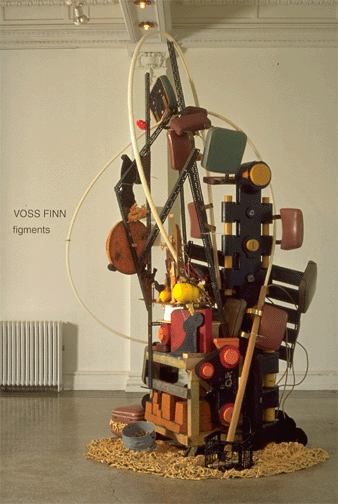
Cooney Party at the Badlands.
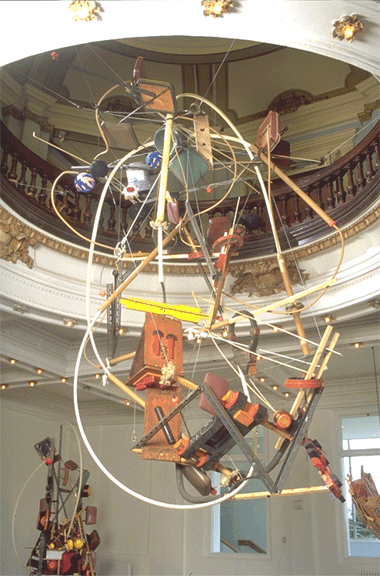
Prepositional.
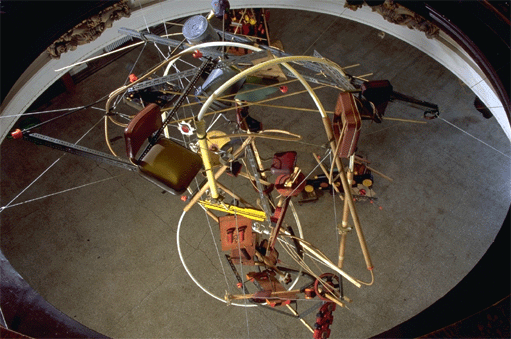
Prepositional.
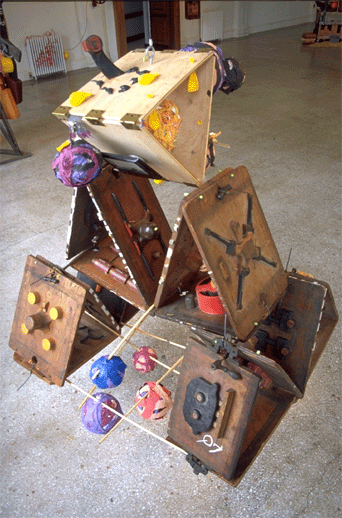
Rain is not Precipitation.
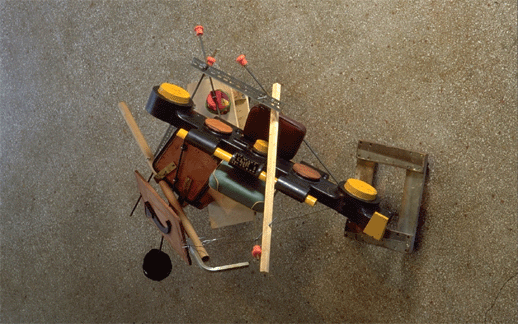
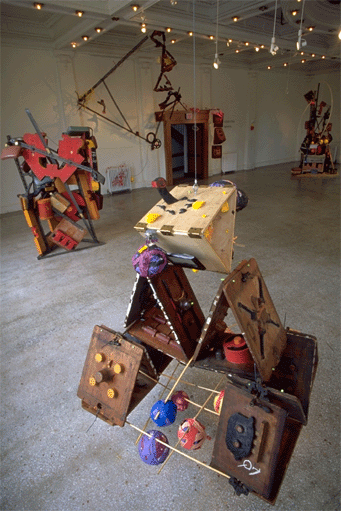
Installation View.
Recently I have begun to work with found objects. Many of these objects are
beautiful and in great abundance. I discovered in a discarded heap, loads of cumbersome
machine tool forms as well as an assorted wealth of unrelated materials, and decided to
ignore this bounty, to create more stuff would be heartless and wasteful as well as
impractical. I try to preserve the integrity of these peculiar and sometimes humble
forms, as I call on them to guide me in enlivening a space and perhaps unlock a hidden
mystery or joy. Like machines of perpetual motion the works seem to generate themselves
with a kind of rolling energy that I try to make room for and honor. These works I have
come to call my Figments. They inhabit an imagined space as well as a physical one.
Whether serene or bizarre, my Figments teeter between their materiality and pure energy
simultaneously.
Reordering discarded remnants is like mining the subconscious. I believe
that artists function as the gate keepers of society’s dream life. There is a collective
dream space or consciousness we tap into, bringing forth a reordered reality which
society may consider and be enriched by. Dreams can present us with a truth we need to
face; yet they can also be dismissed. I believe dreams and art are made manifest in us
as a healing process. Mine is a process of grappling and discovery bringing to light
fleeting moments of truth for bemusement or insight or good health or all.
The work in this series began with an assemblage that served as a personal
diary or private clock, recording experiences through meaningful objects--a friend’s
discarded painting, plastic spoons, a hand-written note, a folding chair. Objects were
collected,then bound together with a ratchet strap and suspended from the ceiling. This
introspective work led to similar assemblages that became more inclusive as the work
progressed. While experimenting with hanging and standing assemblages, a new body of
work emerged.
The newer works took on a social aspect in addition to the personal. Materials
were gathered from society’s cast-offs--industrial artifacts, chairs from long-closed
factories and other mundane objects. Abandoned warehouses became gold mines for
discarded materials of forgotten lives and activities. At a local paint store,
half-price paint took on added significance. Cast-off colors, originally meant to
brighten the interiors of private homes yielded their intensity to the sculpture.
Strips of discarded packing material were dipped into the bright pigment and wrapped
like bandages around scarred and scuffed flooring blocks from an Ohio factory. It was a
healing gesture--an apology to the floor for years of neglect. When fastened to the
assemblages these colorful hand-wrapped objects became a healing metaphor, offsetting
the somber vocabulary of displacement.
The work raises more questions than answers. Where are the factory workers who
diligently sat on these stools? Who are the families who chose the brightly colored
paint only to return it unused? How does this 'stew' of our community or crazy quilt of
events reflect today’s society? How can we as artists, in good conscious, continue to
create using more and more of our natural resources when so much material around us
has fallen into neglect and ruin?
The work was born out of an intuitive process, allowing me to juxtapose disparate
objects is surprising ways. The most exciting aspect of this process is the arbitrary
elements that find themselves at the core of the expression. Archetypal symbols seem to
stubbornly appear within everyday objects, hinting at an underlying calligraphy of
humanity. The process is one of grappling and discovery, bringing to light fleeting
moments of truth. Individually and collectively we must look for meaning as well as
personal healing we can experience together
|
|








